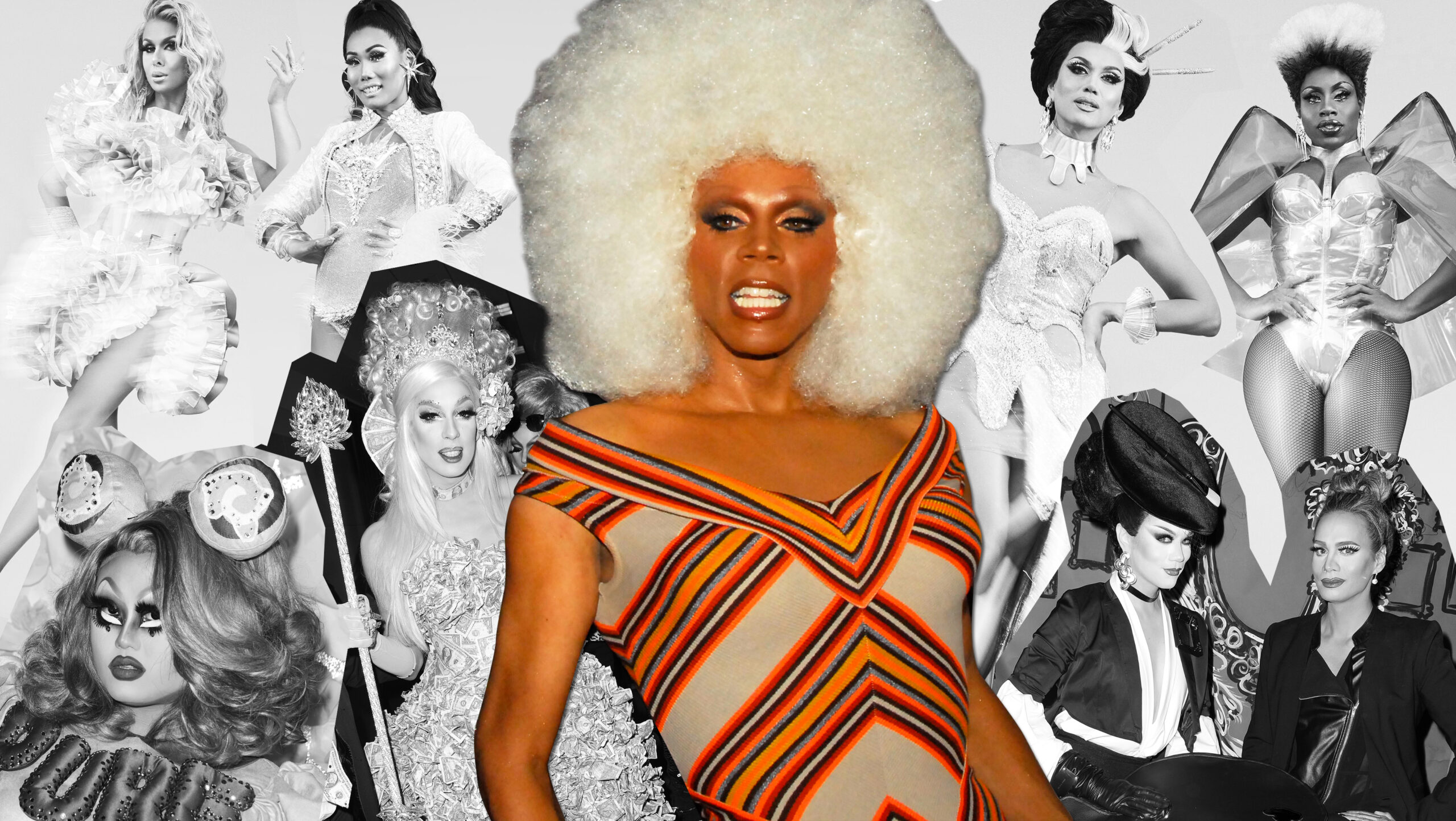There’s a very fair argument to be made that nothing is wrong with RuPaul’s Drag Race. The show won the Emmy for best reality competition series last year, and continues to enjoy high ratings and massive popularity. Ratings are at an all-time high, and since the show jumped to VH1, it has boasted Lady Gaga, Gus Kenworthy and Christina Aguilera as celebrity judges. If it ain’t broke, don’t fix it, right?
Well, sure, that’s the short-term answer. But plenty of reality shows have enjoyed their highest ratings during some of their worst seasons — think American Idol thriving during Season 6 despite Sanjaya Malakar, only to almost immediately see a dive in ratings after. Fans can feel wrapped up in a particular narrative of a season, making it less likely they’ll jump ship until they’ve seen that storyline out. The issue is, will they then come back for the next cycle?
Which is why, in the wake of an almost universally loathed double crowning at the end of RuPaul’s Drag Race All Stars 4, it’s time to diagnose the franchise’s various maladies. Make no mistake: Drag Race is still a joy to watch every week, but for the sake of its longevity, it has to deal with its issues. Here’s my advice:
Shorten the seasons, especially All Stars
A reality competition series should have exactly enough episodes to send a contestant home each episode. This is, of course, basic math; the only way to extend or shorten a season is through double- or non-eliminations, or bringing queens back. In the show’s yesteryear, these kinds of twists were genuinely surprising, and resulted in seasons of wildly varying lengths (seven competitive episodes for Season 1, 10 for Season 2, 13 for Season 3 and so on).
Now, however, VH1 routinely orders seasons that are too long for the number of queens that World of Wonder Productions cast. Season 10, for example, filmed 11 competitive episodes for a cast of 14. Sounds reasonable, until you remember that Drag Race has a top four nowadays, thanks to the Lip Sync for the Crown finales. Any fan looking at a calendar could figure out that there had to be a non-elimination week at some point. So it wasn’t very surprising when Kameron Michaels and Eureka O’Hara got a double-save after a fairly underwhelming “New Attitude” lip sync — the save had to be used.
Nowhere is this worse, though, than in All Stars. All Stars 3 was bad enough, with a returnee required to come back to the competition in Episode 6 despite the returning queens losing the supergroup main challenge. (Appropriately enough, Morgan McMichaels went right back out the door after her return.) All Stars 4 made the situation so much worse, with 10 queens and 10 competitive episodes, with a finale designed for a top four.
The show did have a plan, but the execution was a nightmare: Episode 5 was a non-elimination, and Episode 6 teased a big twist — one lip sync loss and you’re going home! — only to completely fail to eliminate anyone. Instead, Latrice Royale returned; effectively, no one went home in Episodes 4 to 6. This filled out the season, but killed its momentum.
Season 11 does seem to have remedied this problem in one way, casting an additional 15th queen for the season. But when we already have two seasons a year, it seems like the solution should be fewer episodes, not more. Good things come in small doses; we don’t need to OD on Drag Race.
Diversify the challenges — and the cultural reference points
Snatch Game of Love and the club-building challenge were a good start, but Drag Race really needs to rethink its challenges from the ground up. There’s no surprise to a Rusical challenge, or a ball, or a makeover challenge — it’s rote. By comparison, Top Chef has exactly one signature challenge, and it’s Restaurant Wars. Project Runway has staples, including an avant-garde challenge and an unconventional materials challenge, but it finds new ways of implementing them every season.
I’d throw acting challenges out entirely (the fanbase hates them) and retool Snatch Game. Snatch Game of Love wasn’t the right concept, but the idea of doing something different is right. I’d argue the issue there was splitting the queens up into groups; the collective dynamic serves them all better.
Additionally, Drag Race needs to diversify its cultural reference points. Way back in Season 1, queens channelled Oprah and Destiny’s Child in challenges. Now, we’re getting Judy Garland and Cher challenges, and Madonna and Lady Gaga runways. These women are gay icons and legends — but they’re all white. Queens of colour who grew up with different cultural touchstones are at a disadvantage. Where is the Latin music challenge that uses Selena as an inspiration? Where is the Rihanna runway? Where is the Janet Jackson challenge? Drag Race keeps crowning white winners out of crops of stellar queens of colour, and I think this is a big part of why.
Also, if Drag Race continues to do makeover challenges, for the love of all that is good, it needs to dump the mini-performances that the queens and their makeover subjects have to do. They’re always edited into short, indistinguishable clips, which makes it maddening when they’re suddenly cited as the reason for one queen’s win.
Get back to the show’s gay roots
It is inarguable that Drag Race’s fanbase has gotten younger, more female, and whiter. The shift to VH1 from Logo has only leaned into this audience change, both in content and in promotion. (Look, for example, at how often exclusive news about Drag Race breaks in mainstream publications like Entertainment Weekly instead of queer publications like Out and The Advocate.)
The biggest change I can think of in this regard is the removal of the puppet challenge from Seasons 4 to 9. Long a beloved mini-challenge, the puppet challenge called for queens to imitate and read each other by making puppets. The way they selected their fellow queen to target was by putting their hand through a hole in a pink wall — a glory hole, was the suggestion. But for Season 10, the first season specifically filmed to air on VH1, the challenge was suddenly gone.
There are other examples of this shift, too: Talk of gay culture is mostly about empowerment and love now, with sexual innuendos increasingly infrequent. The utter butchering of the Stonewall Riots story in All Stars 4’s makeover episode was particularly horrifying; young people watching the show were told that Judy Garland’s death caused the riots, not years of mistreatment and brutality from the police.
Drag Race needs to get gay again, and not just in the sunny, positive, family-friendly fashion it is now. A Drag Race that embraces a subtle joke about a glory hole is the Drag Race us queers fell in love with all those years ago.
Choose the winner during filming, and don’t change it
I beg of you, Drag Race: Lock in your winner when you film the season.
Drag Race infamously films multiple endings every season, thanks to a leak from Perez Hilton back in Season 3. Usually, this just means whoever remains in the top two or three or four gets a crowning filmed, though on occasion — Season 6 most notably — the show will shoot a double-crowning. (They, ahem, did not shoot a double crowning this season.) This gives the show flexibility to choose a winner after seeing fan response; it’s widely understood that the negative response to Ginger Minj is what secured Violet Chachki the win in Season 7.
But this has now become a messy situation. Back in All Stars 2, the producers decided to film a reunion — before the episodes had finished airing. In the penultimate episode, Alaska received a remarkably bad edit that had fans jumping ship from supporting her as the winner. So after Ru crowned Alaska, and told her at the reunion, he then promptly watched the fanbase almost universally fall in line behind Katya.Had the show just chosen Alaska as the winner before, the editors would’ve made her penultimate episode treatment more forgiving, and there wouldn’t have been an issue.
The same goes for Season 10, which went out of its way to make Aquaria, Asia O’Hara, Kameron Michaels, and Eureka O’Hara all viable winners, because they didn’t know who Ru would crown in the finale. And, of course, the All Stars 4 finale is the worst example yet, with an ending held together with paper clips and ADR, because the show never intended for both Trinity the Tuck and Monét X Change to win.
Drag Race can keep filming multiple endings for the intrigue, but it needs to lock in a winner. This indecision and these attempts to pander to the fanbase are blowing up on them every time. If RuPaul thinks a queen is good enough to be America’s Next Drag Superstar, then that should be enough for us. As we’ve seen with this double-crowning, even the most blatant attempts to appeal to everyone are destined to be despised — there’s no avoiding the backlash. All the show can do is be confident and choose who they believe truly deserves the crown.
RuPaul’s Drag Race Season 11 premieres Thursday, Feb 28, at 9 pm ET on VH1 in the US and OUTtv in Canada. And don’t miss my recaps and rankings of Season 11, starting Friday, Mar 1 on Xtra.
Legacy: February 21, 2019 5:43 pmAn earlier version of this piece incorrectly stated that World of Wonder was RuPaul’s Drag Race’s home network. It is the company that produces the show.


 Why you can trust Xtra
Why you can trust Xtra


